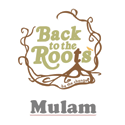Thanjavur Toys
Each Indian state has its own method of disseminating information about its traditions and cultures. South Indian culture, in particular, is the culture of the South Indian cultural group. They are also well-known for their festivals, fasts, temples, spices, and gold. Perhaps the architectural designs of these temples paved the way for the development of family-like toys. These states have a distinct method of creating toys out of clay and wood. Because of their distinct designs, South Indian toys are extremely popular around the world.
The Thanjavur Head-Shaking Dolls’ Chronology
- Tanjavur was ruled by the Cholas for many years and served as their capital. Tanjore, which is located in Tamil Nadu, was the previous name for this city. and is the rice bowl of South India.
- These dolls have a long history dating back several centuries. The root cause of this
- The magnificent structure was patronized by Maratha King Saraboji. He has a great love of colors and the arts, which has made this city famous.
- Thalaiyatti Bommai (Thalaiyatti means “shaking head” in Thai, and Bommai means dolls).
- These dolls are used as gifts and decorative items.
Materials and Procedure
The artists use wood pulp and plaster of Paris to create these head shaking dolls, and the main material found in nature is clay, which is obtained from the banks of the Cauvery river. Molds made from ‘, bommai maavu’, powdered paper, and starch powder are some of the ingredients.
Procedure
- Toy flour dough is flattened and pressed along the mold until it conforms to the shape of the mold. Excess flour is scrapped out.
- Paper scraps are pasted inside the molds with starch paste. Molds are held together
- Layers of newspaper starched together form a single piece that is used to close the partition. Rolls of paper are used to secure the terracotta bowl to the bottom.
- It is painted with color after it has dried. These toys are created in pairs, such as Raja and Rani.
- These toys are created by both men and women. The dancing Thanjavur doll is the most unique and exquisite one. one-of-a-kind and exquisite.
- The artist’s hands have been used in various traditional dance forms such as Bharatanatyam, Kathakali, Manipuri, and so on.
Conclusion
They are less expensive than plastic dolls and are in high demand during the Navaratri season in South India because they represent Hindu Indian culture. It is in high demand overseas due to its distinctive features and appearance. The Indian government assigned these toys to geographical indications in 2008.

